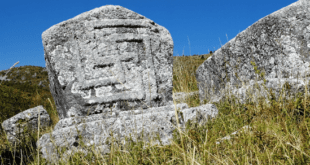A high-tech method of fingerprinting is a simple, cost-effective way to encourage farmers in developing countries to apply for and repay micro loans, new research shows.
The study, published in the October issue of the American Economic Review,involved 3,000 farmers in Malawi who applied for micro loans, of an average amount of $117, to grow paprika.
Like many impoverished countries, Malawi lacks a national identification system. Most of the population lives in rural areas with few government services. Even identification as basic as a birth certificate is rare in the southeastern African nation.
This poses a big challenge for banks that need a reliable system to identify borrowers, says Dean Yang, associate professor at the Ford School of Public Policy and the economics department at the University of Michigan.
“If you can’t figure out who a person is, you can’t determine their past credit history,” Yang says. “You can’t offer more and better loans to someone with a good credit history. You can’t withhold loans from someone with a history of defaulting.”
Using a “randomized control trial” similar to those popular in medical studies, the researchers divided the farmers into two groups: those who were fingerprinted and those who were not.
Although fingerprinting is often associated with police work and criminal misdeeds in other countries, it doesn’t have such negative connotations in Malawi and doesn’t appear to deter farmers from taking out loans.
“It’s very rare for people to be fingerprinted in Malawi,” Yang says. “Often it’s in the context of voting. They’re familiar with doing it on ballots, so it’s a positive association.”
The researchers used biometric identification, a high-tech method of fingerprinting that uses a laptop, fingerprint scanner, and fingerprint capture software.
“For every dollar invested in fingerprinting technology and the staff costs associated with implementing it,” Yang says, “we generated an additional $2.34 in profit for the microfinance institution.”
The study shows that 85 percent of the fingerprinted farmers considered to be high-risk borrowers repaid their loans in full. In the control group, only 44 percent of the high-risk borrowers paid back their loans. High-risk borrowers also took out smaller loans when they knew the lender could easily identify them.
The farmers also devoted more land to paprika, the crop with which the loans were repaid. They were less likely to take the money for paprika and use it to grow other crops.
The other researchers were World Bank economist Xavier Gine and Jessica Goldberg, who was Yang’s doctoral student and is now an assistant professor of economics at the University of Maryland.
Source: University of Michigan
 Conspiracy Plot
Conspiracy Plot


